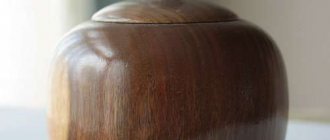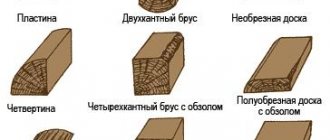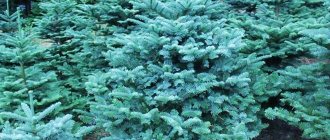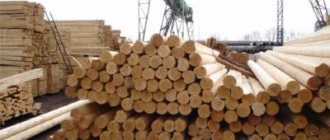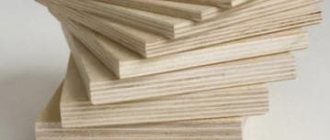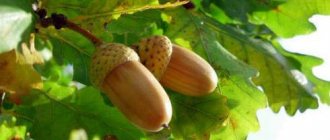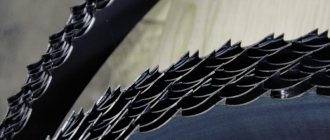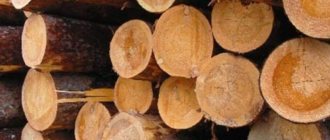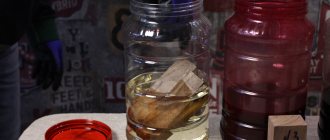Articles
All photos from the article
In 99.9% of cases, if it is necessary to construct a wooden building, lumber is purchased in ready-made form. When choosing, it is simply vital to understand the intricacies of dividing wood into grades. This will not only help you choose the best option for each case, but in some situations it will also help you save money, for example, some sellers use double designations like AB wood grade, although this is a purely psychological technique to justify an inflated price.
Lumber warehouse
What are the differences between types of wood?
There are four groups of varieties:
- Extra;
- Prima;
- AB;
- Sun.
Division into types presupposes work done in advance when selecting ready-made material. All wood was produced and dried equally from the total quantity of the entire batch. Experts distribute wood based on each product's standards. The varieties differ according to the characteristics presented below.
Extra
It ranks first among all other types of wood and is distinguished by its high price. When choosing this variety, it is worth considering that the material will be completely free of any possible errors, with the same structure over the entire surface and have a uniform color, the most saturated tones. To make this type of wood, the butt part of the trees is taken.
Prima
The variety has ideal characteristics, has an ideal structure, and is even cheaper in cost than the “Extra” variety. There are minimal errors during operation; this type is used in the manufacture of machines or other equipment.
AB
The cost is cheaper than the first two types, but there is a significant disadvantage, which is the presence of knots and cracks.
Sun
One of the cheapest types of wood, but savings greatly affect the quality. There are strong cracks, many knots, used exclusively for minor parts.
Regions where conifers grow
The main source of coniferous wood on an industrial scale is the Northern Hemisphere. This zone occupies the Arctic and subarctic regions and extends into the southeastern United States. Conifers are relatively fast-growing trees and can be grown economically in artificial forests. They are cheaper than hardwood and are widely used in construction and carpentry, as well as in the production of artificial boards and paper.
Softwood boards
Boards made from local softwood trees, including those with raw edges and bark, can be purchased from nearby sawmills. Imported lumber usually comes debarked and with edges trimmed. On the cut of a larch (pictured) the bark and mature core are visible. Sapwood is a light-colored wood that is less resistant to decay and insect attack than heartwood.
Wood color
The color of wood can vary significantly not only within the species, but even within the same tree. Most woods darken when exposed to light, although some lighten or even change color. Substances used to treat the surface, regardless of their transparency, tend to darken the color of the wood. The small squares in the photo show the shades of wood color before and after finishing with a transparent compound. A simple test to determine the effect of finishing materials on wood is to wet its surface with saliva.
Area of distribution of coniferous trees
| Coniferous forests |
| Mixed (coniferous and broad-leaved deciduous) forests. |
The scale of the map does not allow us to show in detail the distribution areas of trees
General information about wood quality
Wood is a building material that has been used since ancient times. Now this material continues to be in demand in construction.
This material has the following positive properties:
- presence of high strength;
- low thermal conductivity;
- high resistance to chemical acids;
- glues securely and is easy to process;
- looks beautiful.
Properties such as high strength combined with lightness provide high quality during operation and use in construction. The texture of wood is of particular importance - the pattern formed by wood fibers and depending on a specific structure.
The texture directly depends on how the wood fibers are arranged and the color scheme.
The hardness of wood directly depends on what type of wood is available, on the conditions in which the tree grew, and the amount of humidity. Wood is considered a hydroscopic material, capable of absorbing moisture from the environment. At the same time, the moisture content of wood depends on changes in weather conditions. When humidity changes, it significantly affects the size of the planks.
The deformation of wood can vary, depending on the cut and how much tension remains after drying. A certain protection of wood is used, which is associated with protection from moisture, when varnishes or special oils are applied to the surface, intended to apply a protective layer.
To protect the material from moisture when it is transported, certain packaging is used that will well protect the wood from external physical influence.
The material is also impregnated with antiseptic agents under special operating conditions. To obtain excellent quality parquet flooring, the wood can be pressed, changing the density of the surface.
In order for the wood to last a long time and to make high-quality objects from it, optimal operating conditions for the coatings are created.
Wood has some disadvantages:
- surface heterogeneity;
- strong hygroscopicity;
- susceptibility to rotting;
- easy flammability;
- prevalence of vices.
These shortcomings can be eliminated if you comply with the requirements for technical measures and create favorable conditions for operation.
Technical characteristics and properties
Varieties of softwood timber differ in characteristics. For example, larch is not only the hardest of them, but is also very resistant to moisture, and, consequently, to rotting. Therefore, it is often used for construction and cladding the exterior of buildings. Pine is soft and easy to work with. Yew has an attractive structure, as you can see by looking at the photo. Spruce is not so popular, as it is quite difficult to process, but it has a lower cost.
In addition, the length of the beam plays an important role. Depending on the length, softwood timber can be used for different purposes. The impact strength of the wood species should not be ignored either.
It is worth paying attention to coniferous timber and its imitation in the form of laminated veneer lumber, since pine needles have many positive qualities that will definitely manifest themselves during the use of such timber. For example, the fact that needles are usually impregnated with resin, which repels moisture well
In addition, coniferous wood species are more resistant to parasites, and with special impregnation they will generally cease to be affected by them, as well as by the effects of temperature changes with changing periods of the year.
You also cannot ignore the fact that the needles have an attractive structure. Therefore, for example, furniture made from such wood will have a very beautiful appearance. The dimensions of softwood timber usually provide room for creativity, as they are quite large. The impact strength of pine needles is also high. The requirements for it are specified in GOST.
Application
The dimensions of coniferous timber, whether edged or unedged, allow it to be used for many purposes. In addition, the fact that there are both edged and unedged coniferous timber will allow you to save money if necessary or, conversely, buy a higher quality and more expensive option.
Regardless of the type of wood you choose, you can make furniture out of it, build a bathhouse or shed, clad a house, or use it for other purposes. Such versatility indicates the highest quality of coniferous wood. In addition, needles are a fairly affordable material, regardless of GOST, even if you need large boards.
Description of wood types
There are several selected groups, which include 1, 2, 3, 4 varieties. Below is a detailed description of the varieties.
1st grade
It is used in shipbuilding, motorcycle production, manufacturing of cars, carriages.
There are no signs of rot or fungus. There are no knots, holes, cracks are not allowed, wane may predominate, blueness is present, the presence of healthy knots is acceptable.
The first grade refers to the highest quality lumber. There may be minor defects that do not affect operation. The cost of the first grade may differ and be two or three times higher than the price of the selected variety, but it is difficult to visually distinguish them.
It is used in construction for the installation of structures, in repairs, in the manufacture of windows, and is also widely used in the production of furniture.
2nd grade
Used for lathing, installation of panels, roofing.
Rot is not allowed, the predominance of resin pockets is allowed, sharp wane and falling knots may predominate, blue along with other colors is allowed.
The second grade is characterized by reduced requirements, but it is actively used for critical tasks and is in great demand among consumers.
This can be explained by the fact that the reliability of the material remains at a high level; the established cost allows them to be purchased widely.
To distinguish the second grade, just look at the number of fibers.
3rd grade
Used for small buildings, structures that do not carry a large load, for example, canopies or pallets.
We allow wane along the entire length, the presence of resin pockets, wormholes, cracks is allowed, and a slight slope is allowed.
The third grade is considered a profitable option; the price quality is reflected on the boards. Requirements vary significantly, which leads to weakening of the load-bearing characteristics of the workpieces. But this variety is used everywhere and is often used in work.
4th grade
Used in construction for low-budget organizations: formwork, fencing, containers.
Wormholes are allowed, edge warping is allowed, and wane is present.
The fourth grade is classified as having the lowest price quality and low quality characteristics. This grade includes those materials that did not pass the final test to determine high grade. Wormholes are prevalent here, warping is present, and there are also large cracks and damage.
Suppliers try to use soft wood varieties in their arsenal, for example, pine and fir. To sort softwood, first of all, check for the presence of defects and the predominance of a uniform layer.
High strength is required for the construction of any type of structure; unfortunately, such materials are rarely commercially available; they are made to order. Before you make a purchase of this or that wood, you need to make sure that the company has certificates and documents for the products.
How can this building material be labeled?
When purchasing wood, you need to pay attention to its compliance with European standards. All products sold must be CE marked.
Also, all construction wood is divided into four grades. Each variety is marked:
- Selected variety - has a marking in the form of one horizontal stripe, the number “0” or the letter “O”. It has no defects, knots or cracks. Rot and fungus are not allowed on it.
- 1st grade - marked with one vertical stripe or dot, the number “1” or the letter “A”. Knots and small cracks can be seen on this wood.
- Grade 2 – indicated by two vertical stripes or two dots, the number “2” or the letter “B”. Knots and cracks are more common in grade 2.
- Grade 3 is indicated by three vertical stripes or dots, the number “3” or the letter “C”. Such wood is susceptible to biological damage and fungus, waviness and structural defects. It is used for decking and sheathing.
If the marking of a selected or first grade contains the letter “C”, this indicates its suitability for shipbuilding. Skis are made from wood with the letter L.
All construction timber must be marked with permanent paint. Varieties have a specific purpose and a price corresponding to the quality. Knowing the difference between classes and types of wood, you can choose the right material, and sometimes save money.
This is how wood is marked in production:
Softwood
According to the structure of wood, hardwood species are divided into ring-vascular and scatter-vascular. All species with a ring-vascular structure usually have hard wood, but species with a disseminated vascular structure have both soft and hard wood. Alder, linden, aspen and birch are soft woods.
Alder
There are two known types of this tree - black alder and gray (in our country black is more common). It got its name because of the color of the bark. Alder loves moist soil. Immediately after cutting, the wood has a white color, which turns red when exposed to air. Dried alder wood has a very beautiful and unusual pink color. It is not subject to shrinkage, does not crack, is very soft, and does not deteriorate from moisture.
Alder sauna lining
It is used to make plywood, turning products, and souvenirs. It is widely used for the manufacture of furniture and carpentry. It has proven itself to be an excellent material for finishing bathhouses. It is also used in container production.
Linden
Linden has light and soft wood that does not crack, warp, bend and is easy to cut. That is why various dishes and models for subsequent casting are often cut out of linden, drawing boards, packaging containers, pencils and much more are made.
Lining made of soft linden wood
Aspen
Aspen has straight-grained wood with a homogeneous structure, which is almost not subject to shrinkage, splits easily, and can retain its properties for a long time even in a humid environment. The color of the wood is white, and over time it acquires a grayish-silver color. Aspen is considered the best material for building bathhouses; their walls are lined with aspen clapboards; all shelves and benches are also best made from aspen. It is used to make container boards, packaging shavings, toys, dishes, matches, and viscose for the production of rayon. In former times, it was often used to cover roofs and make well frames.
Finishing the bathhouse with aspen wood
The lifespan of aspen is short; after 30 years, the tree rots. Among aspen, specimens with a large trunk diameter are very rare, so the maximum width of an aspen board that goes on sale does not exceed 20 cm.
Properties and structure Species and varieties Drying and preparation Processing Tools
Types of softwood lumber
The correct choice of the type of edged board or edged beam has a great influence not only on the quality of the final product, but also on its final price.
Legal basis
Currently, the criteria and indicators of lumber quality are regulated by current state standards and take into account several factors:
- Description of sawmill production, terms and definitions of lumber are contained in GOST 18288-87
- The nominal size and maximum deviation fields from the nominal size of softwood lumber must meet the requirements of GOST 24454-80
- Wood defects, terms and classification of defects are defined in GOST 2140-81
- The norms and limitations of defects in softwood lumber are regulated by GOST 8486-86
- Methods and rules for control of lumber and blanks are regulated by the provisions of GOST 6564-84
In one article, we decided to briefly combine all the characteristics of lumber - this is what is important to understand and necessary for an ordinary consumer to know. We will talk about the main factors and criteria influencing the grade, as well as methods for their visual determination
Our methodology is based on the above state standards and is as close as possible to the concepts of lumber grade existing on the market today. Yes, indeed, some state standards adopted in the 80s today differ from the actual properties of lumber offered for sale on the market. The main thing remains the fact that, in essence, lumber has not changed in its physical properties: pine and spruce are out of politics, despite the fact that years have passed since the adoption of GOSTs, and they can and should be used in general construction activities with confidence and without fear. Currently, to determine the grade of coniferous wood, the market has its own unwritten standards, and for most of the regulated parameters they differ from the generally accepted GOST standards. Also, deviations from GOST can be according to the classification of natural defects, taking into account their biological characteristics, meaning knots - shape and number, size of the wane part. Be sure to read the article Classification of wood defects, you will find out what is an important and unacceptable defect, and what is not important. Don't be fooled when buying lumber.
General technical requirements
Softwood lumber is made from spruce, fir, pine, cedar and larch. The most common and affordable is pine or spruce lumber. As a rule, for the production of edged lumber, round timber is not sorted and spruce and pine are offered for sale in mixed form, since they also grow together in the forest
Sorting is not economically profitable - in other words, sorting will lead to an increase in the final cost of the material, but it is important to understand: the quality of pine and spruce boards is the same in their technical characteristics. That is, you can ignore this aspect - their physical characteristics are very similar, and for solving most construction problems the quality and strength characteristics of spruce and pine will be identical
According to the quality of structure and quality of processing, edged boards can be of five grades. There are four grades of softwood edged timber. The relative humidity of selected and 1-3 grade lumber cannot exceed 22%; by agreement with the customer, the indicators may change. The fourth grade has no moisture restrictions
The grading is assessed taking into account the condition of the edge or face; only the worst part is taken into account when measuring. The surface roughness for selected and 1-3 grades must be less than 1250 microns; the fourth grade has no restrictions on this parameter
This is exactly what is very important. Often, cheaper lumber is sold under the guise of higher quality
elka-palka.ru

